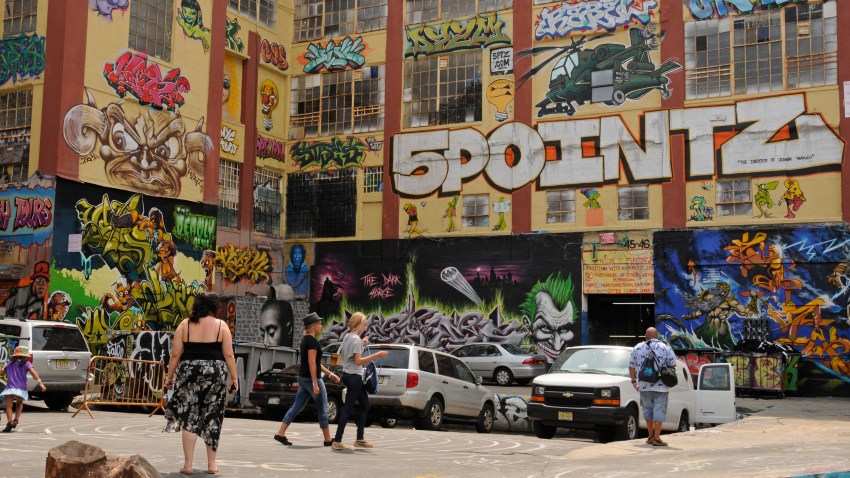The case is Castillo v. G&M Realty, LP, issued on February 20. The artwork was located at the 5Pointz site, where some graffiti had permanence but others were painted over quickly. Over time, the site displayed more than 10,000 works of art. When plaintiffs learned the landlord wanted to raze the building to build luxury apartments, the district court denied their application for a preliminary injunction under the Visual Artists Rights Act of 1990, which prevents the destruction of artwork that carries "recognized stature." Although the preliminary injunction denial did not end the case (it only denied plaintiffs immediate relief), the landlord next began to destroy the artwork and banned the artists from the site, refusing them permission to recover the work. The art was then whitewashed. The pre-whitewashed artwork is below.
At trial, the district court found that 45 of the works had achieved recognized stature, and that "the works 'reflected striking technical and artistic mastery and vision worthy of display in prominent museums if not on the walls of 5Pointz.'" The Court of Appeals (Parker, Raggi and Lohier) affirms, finding that that the trial court properly found the landlord willfully destroyed this artwork, protected under the VARA because they have "recognized stature." There is little case law in this area, and the Circuit cites a district court ruling and a Seventh Circuit decision, stating, "We conclude that a work is of a recognized stature when it is one of high quality, status, or caliber that has been acknowledged as such by a relevant community." Artistic quality is the most important factor. The idea is that the VARA protects "the public interest in preserving the nation's culture," so that even a "poor" work by a highly regarded artist, "anything by Monet," merits protection. At trial, plaintiffs proved the graffiti "had achieved recognized stature" through exhibits, credible testimony, and an expert witness."
The Court rejects defendants' arguments that the artwork is not protected when it is temporary. The statute contains no such limitation. And, the Court points out, in 2005, temporary artwork in New York City achieved recognized stature when "Christo" displayed 7,500 orange draped gates in Central Park, known as "The Gates." The Court adds that, in recent years, "street art," much of which is temporary, has emerged as a major category of contemporary art.
As for damages, the district court properly held that the decision to immediately whitewash the artwork after the district court denied the injunction the artwork was willful, triggering enhanced statutory damages. The $6.5 million is the maximum amount under the statute, and the trial court has wide discretion in setting a damages award. Defendants' state of mind is relevant here. The trial court noted that the whitewashing did not completely obscure the artwork, making it easily visible under layers of cheap paint, "reminding the artists on a daily basis of what had happened to them." This half-elbowed effort was also visible to the public.






No comments:
Post a Comment